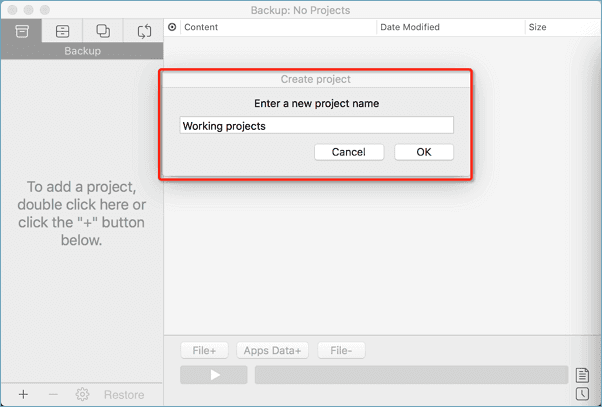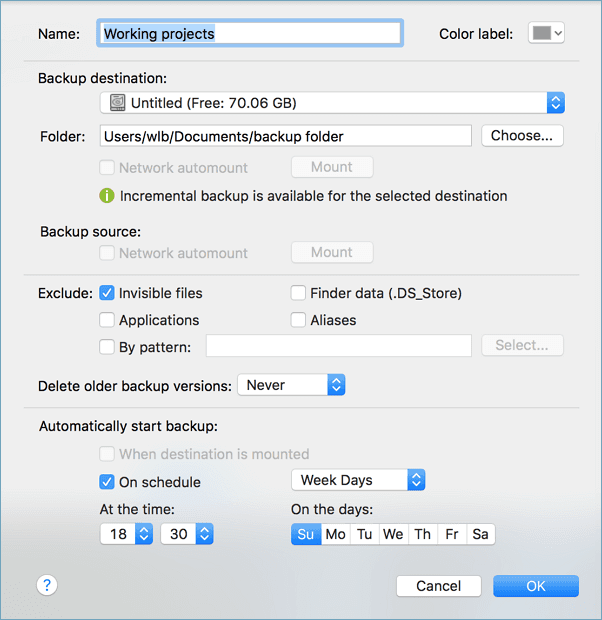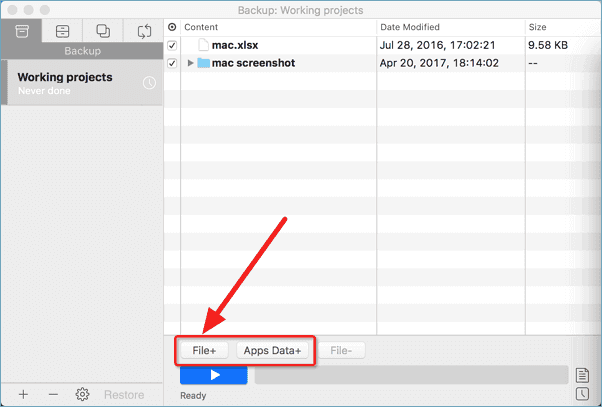No denying that Time Machine is the best choice to back up your Mac and save your data. It keeps taking incremental backups to store your data safely and lets you recover when required. But the problem comes when you face insufficient storage problems due to its backup.
In such a situation, you must learn how to delete old Time Machine backups to free up space. This blog from EaseUS will share the most effective ways to get the task done and experience better outcomes.
When & Why Should You Delete Old Time Machine Backups
Time Machine is a built-in tool from Apple to back up your Mac computer. Before understanding how to delete backup files from Time Machine, it is good to be aware of the situations in which you need to do this. So, we are here with the most common reasons that can be behind the removal of these files.
The most prominent one is the storage capacity of your device. When it keeps saving multiple files in the device's storage, you may experience multiple issues in your Mac device. For example, it may be processing slowly due to less space.
In this regard, you must remove old backups and free up space from those useless or less important files. Another reason for removing old files from Time Machine backup is the addition of new programs.
Your backup preferences may change with the addition of programs or applications. That's why adjusting the settings and removing the old backup files you don't want to keep is good. In the following content, you can learn how to remove your old Time Machine backups. Keep reading!
How to Delete Old Backups in Time Machine
Until now, you have read about the situations in which you should remove old backup files from your Mac. It is time to learn the methods you can follow for this removal.
- Method 1. Delete Old Backups from Time Machine via Time Machine
- Method 2. Delete Old Backups on Time Machine Using Finder
- Method 3. Remove Time Machine Backups with Terminal
Method 1. Delete Old Backups from Time Machine via Time Machine
Undoubtedly, Time Machine has been set to automatically delete old backups when the hard disk is experiencing low storage issues. However, some users have reported that they can't get the task done automatically by the Mac backup software itself.
If you also face the same problem, you can delete old backups using the Time Machine menu bar. Here, you can read the steps you must follow for this purpose.
Step 1. First, you need to connect the external disk to your Mac.
Step 2. Search for "Time Machine" and open it.

Step 3. Look for the "Backup Files" you need to delete.

Step 4. Choose all those files and tap on the gear icon.
Step 5. Tap on the "Delete Backup" option to start the process.

Step 6. To confirm the action, you have to enter your admin password.
Just after entering your password, you will see that Time Machine will start deleting those backup files.
Is this post helpful? Share it on your social media to help more Googlers to get their way out!
Method 2. Delete Old Backups on Time Machine Using Finder
Apple has given a built-in file organizer named Finder to keep Mac users at ease. You can also delete old backups from Time Machine using this program. Learning how to delete old Time Machine backups using Finder is pretty simple.
You just need to follow these simple steps:
Step 1. Connect your external hard disk and open "Finder".
Step 2. Look for "Backups.backupdb" and select it.

Step 3. Your Mac device name will be shown in the next subfolder.
Step 4. Click on your device name to look for backup files.
Step 5. All backup files will be shown in the format of "YYYY-MM-DD".
Step 6. Select all files that you want to delete.
Step 7. Click on "Move to Trash" to complete the action.

Until now, you must have removed all files from your device's storage that you think are useless. However, you need to empty "Mac Trash" before you eject your hard disk from the device.
Method 3. Remove Time Machine Backups with Terminal
If you cannot delete backup files from Time Machine using the two methods above, you can also try using Mac Terminal. You can remove any file by inserting a few commands and following the below steps.
Step 1. Hit "Command + Space" to open the search bar.
Step 2. Type "Terminal" in the bar and open the "Terminal.app" from the available list.
Step 3. Type "tmutil listbackups" in the command line and press "Enter".

Step 4. You will see all backup files with their paths. Copy the path of the file you want to delete.
Step 5. Now, paste this "sudo tmutil delete" command in the "Terminal".

You need to replace the "" with the original path of the file you want to delete. With this, you can remove the old backup files from your Mac device and create space in its storage.
How to Backup Mac Without Time Machine
From the above sections, you have read deeply about deleting Time Machine backups from your Mac. Isn't it a hectic task? It must be because you have to follow these methods manually to accomplish the task. In addition, Time Machine is not as fully equipped as you might expect. When you use it to create a backup on your Mac devices, you may encounter the Time Machine can't find backup disk error.
To be comfortable while taking backups, you should choose software that doesn't take up space from your Mac storage. EaseUS Todo Backup for Mac can be a good choice if you are looking for a reliable choice.
This backup software is designed for Mac users in particular. You can save your files as backups in the cloud storage and create a disk image on a Mac with ease. It means that your device's storage will not be used for backups. Additionally, it takes incremental backups and compresses the files to use less storage in the cloud.
Among other backup software, it is considered a top-rated choice. The major reason is its multiple advanced features that are shown below:
- EaseUS Todo Backup enables you to encrypt your data to avoid unethical access.
- It automatically compresses files to save storage and streamline backup procedures.
- It helps you create a bootable clone to upgrade your Mac disk.
- One can schedule backups according to their requirements.
- It lets you clone a Mac hard drive to SSD with simple clicks.
- It allows you to access files from anywhere as they are available in the cloud storage.
This backup software is a perfect choice with these effective and advanced features. We recommend downloading it to your Mac device and trying it to check how efficient it is in backing up your data in 3 clicks.
Step 1. Launch and run EaseUS Todo Backup for Mac.
Click the first Backup tab or simply click the + button in the bottom-left corner to create a backup project - name the backup project and click OK.

Step 2. Set up the backup destination where you want to store Mac files as backups, automatic backup frequency, etc and click OK.

Step 3. Add files and folders to the backup project.
Click File+ to selectively choose files and folders to add to the backup and click the blue start button to back up your Mac to another drive or external device.

Is this post helpful? Share it on your social media to help more Googlers to get their way out!
Bonus Tip: How to Delete Time Machine Snapshots
In addition to backing up to an external drive, Time Machine keeps taking snapshots to your Mac's primary storage. Like Time Machine backups, it deletes automatically once the software takes a backup after connecting to the disk.
However, some users have complained that these snapshots are not deleted from the Mac device. To help all those users, here are the steps to manually delete snapshots from your device.
Step 1. Open "Terminal" and type the command "tmutil listlocalsnapshots/".

Step 2. You will see a list of all snapshots taken by the Time Machine after clicking "Enter".
Step 3. Copy the date and time of the snapshot and write them after this command: "sudo tmutil deletelocalsnapshots".

Step 4. Press the "Enter" key and "Password" if asked.
By following these steps, you can delete local snapshots of Time Machine from your Mac. To delete all snapshots, you must repeat the process for every snapshot.
To Sum Up
By reading this guide, you have learned how to delete old Time Machine backups. It will be easy for you to understand the methods and choose the one you find simple and effective. But to eliminate these manual deleting phases, you should try EaseUS Todo Backup for Mac. It will never let you face problems like insufficient Mac storage, slower processing, and others that encourage you to delete your old backup files.
FAQs on How to Delete Time Machine Backups
1. Can I delete old Time Machine backups on the external hard drive?
You can remove old Time Machine backups on the external drive by following these steps:
- Launch "Time Machine" and open external hard drive
- Find the "Backup files" you want to delete and select them
- Tap on the "Gear icon" and choose "Delete Backup."
2. Is it safe to delete old backups of Time Machine?
Deleting old backups of Time Machine can be dangerous as you can delete the important files, too. It is recommended to save all important files before you start deleting them for your data's safety.
3. Where are Time Machine local backups stored?
Time Machine keeps local backups for the primary storage of your Mac device. It stores these backups every hour and deletes them after 24 hours once stored on the external drive.
Was This Page Helpful?
Related Articles
-
How to Backup MacBook Pro to External Hard Drive [2024 Complete Guide]
![author icon]() Cici/2024-01-03
Cici/2024-01-03 -
![author icon]() Jean/2023-12-22
Jean/2023-12-22
-
Saving Mac Data | How to Backup Mac Computer
![author icon]() Jean/2023-10-25
Jean/2023-10-25 -
Time Machine Can't Find Backup Disk - Top 5 Ways to Fix It!
![author icon]() Jerry/2023-07-20
Jerry/2023-07-20
EaseUS Todo Backup For Mac
- Set up an automated backup schedule in stealth mode.
- Compress backups to save storage space.
- Encrypt your backup to protect privacy.